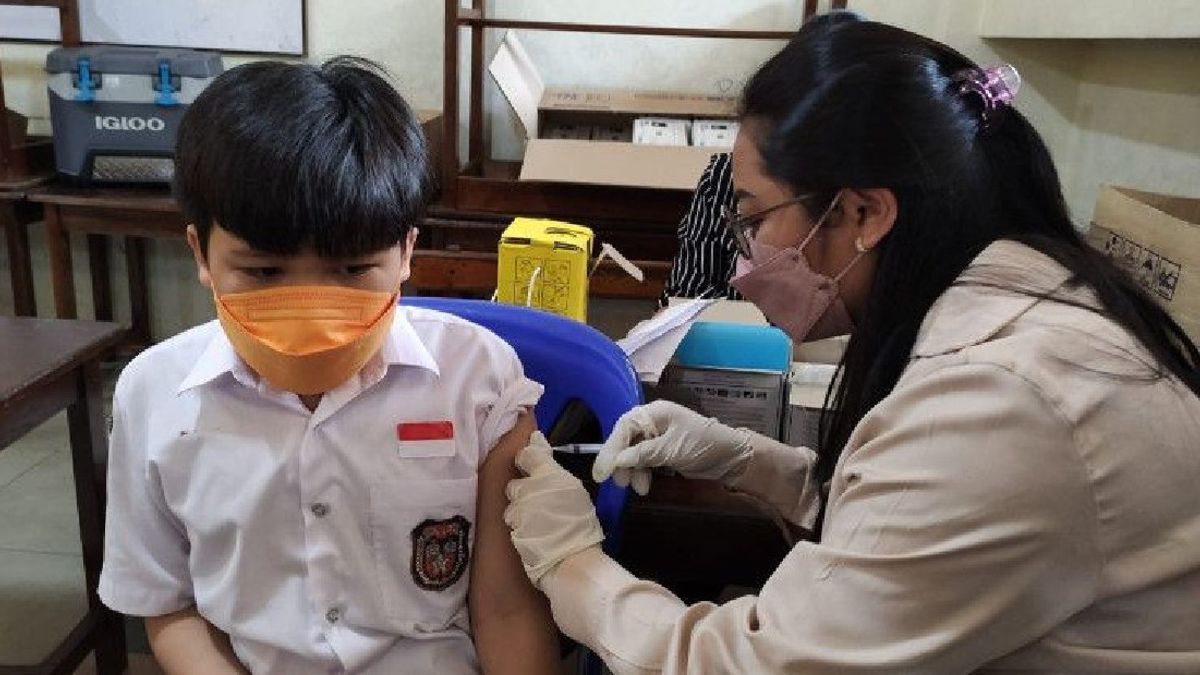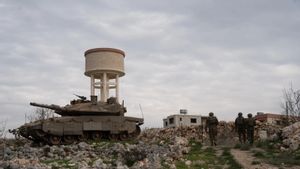JAKARTA - The Food and Drug Supervisory Agency (BPOM) has issued an emergency use authorization (EUA) for the COVID-19 vaccine specifically for children with an mRNA platform developed by Pfizer-BioNTech.
This vaccine is dedicated to children aged 6 months to 11 years with the name Comirnaty Children. This vaccine helps fulfill the need for a COVID-19 vaccine and the limited types of vaccines that can be used for the current population of children.
"The Comirnaty Children vaccine has a different formulation and strength than the Comirnaty Vaccine for adolescents and adults, so the Comirnaty Children Vaccine cannot be used in individuals aged 12 years and over," said Head of BPOM, Penny K. Lukito in a press release, Tuesday, December 27.
Penny explained that the dose of Comirnaty Children's vaccine for children aged 6 months to 4 years for primary vaccination was 3 mcg/0.2 mL which was given in 3 doses. The first two doses were given within 3 weeks, followed by a third dose given at least 8 weeks after the second dose.
Meanwhile, the dose of the Comirnaty Children vaccine for ages 6 months to 11 years in primary vaccination is 10 mcg/0.2 mL, given in 2 doses with a span of 3 weeks between the first and second doses.
In granting emergency permit approval, Penny said that the plan was to first evaluate aspects of safety, efficacy, and quality.
"The results of the efficacy of the Comirnaty Children vaccine as primary vaccination are shown through the results of immunobridging studies, with immunogenicity after administering 3 doses (3 mcg/0.2 mL/dose) for children aged 6 months to less than 5 years and 2 doses (10 mcg/0.2 mL/dose) for children aged 5 years to less than 12 years comparable to the 16-25 year age group which already has clinical vaccine efficacy data," explained Penny.
Based on the study results, the Comirnaty Children vaccine for children 6 months to 11 years old has a safety profile that can be tolerated.
Side effects in children aged 6 months to less than 5 years are generally reported with light to moderate intensity. There was an incidence of elmphadenopathy / swelling or enlargement of lymph nodes in the vaccine group by 0.2 percent in subjects aged 6 months to less than 2 years and 0.1 percent of subjects aged 2 years to less than 5 years.
In the observation of side effects in children aged 5 years to less than 12 years who are of special concern, it was reported that there was a swelling reaction accompanied by redness in 1.2 percent of the vaccine group's subjects and 0.8 percent of the subjects of the placebo group.
In addition, 13 cases of lymphadenopathy were reported at 0.9 percent of the vaccine group's subjects and 1 case in the placebo group. This safety profile is expressed similar to reports in age groups over 12 years.
The English, Chinese, Japanese, Arabic, and French versions are automatically generated by the AI. So there may still be inaccuracies in translating, please always see Indonesian as our main language. (system supported by DigitalSiber.id)













